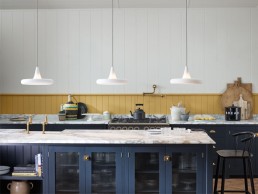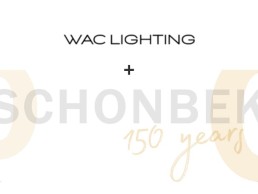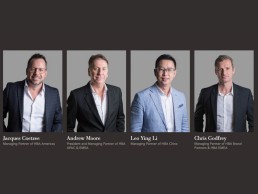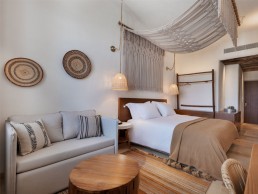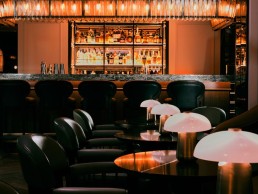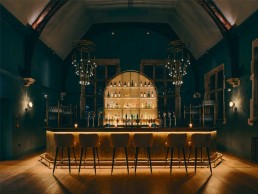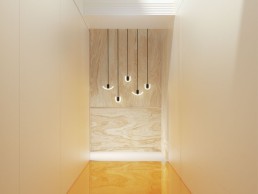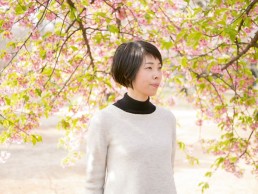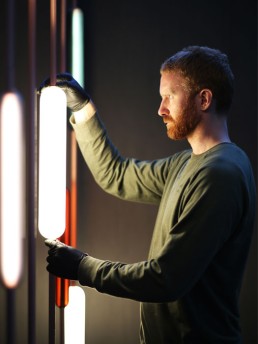Original BTC - Drop Three
Original BTC has launched the third in its bone china Drop series that follows the journey of a water droplet. The Drop Three pendant presents the splash stage as the water hits a surface.
The Drop Three pendant from Original BTC is the final instalment of its bone china Drop collection, which takes its inspiration from the journey of a droplet of water as it falls through the air. Previous pieces in this collection include Drop Zero, One and Two, each showing a droplet’s shape from initial formation, falling in air and landing on a surface. Drop Three represents the stage of the droplet flattening after impact and remerging as it splashes upwards.
“We worked on the Drop Three back in 2001 when my father Peter first designed it, but we weren’t able to produce it to the standard we wanted,” explains Charlie Bowles, Director of Original BTC. “It was technically very challenging to manufacture. Then in 2002, we acquired our Stoke-on-Trent bone china factory, Staffordshire Heritage. We spent the next two decades investing in the team and the factory’s production techniques and capabilities. As a result, we were able to forge ahead with the Drop Three, and we revisited the designs at the start of June last year. This time around, it took us six months to get the Drop Three absolutely perfect.”
The “sculptural, organic and elegant” Drop Three pendant comprises a handmade bone china shade with a satin brass cap and cord grip, grey cotton braided cable and a matching bone china ceiling rose.
When asked about the design process, Managing Director Peter Bowles, explains that the concept originated back in 2001. “Back in 2001, I developed the concept by studying pictures and slow-motion, videos of falling water droplets – how they behave, what they look like as they take shape and fall. I sketched and drew, and then set about seeing if a series in bone china was a possibility.
“As Charlie says, we didn’t have our bone china factory at the time so there was some back-and-forth with the manufacturer we were using back then. With Drop One and Drop Two there was no problem… But Drop Three was problematic. It was very fragile before it was biscuit-fired (that’s the first firing in the kiln) and had to be handled incredibly carefully,” explains Peter further. “With the production facilities available to us at the time, it proved to be too complex to take forward. It often didn’t make it out of the kiln without collapsing. But, with the advances we’ve made in terms of having our own bone china factory and having the ability to really develop our techniques – that’s changed everything.
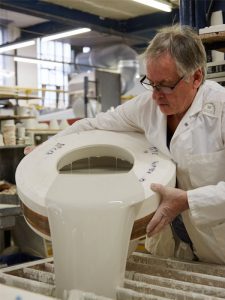
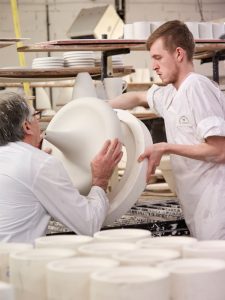
“Design-wise there’s very little difference between the original and this new launch. We’ve slightly tweaked the depth of the well around the inside of the shade - the foundation, essentially. And of course, there’s the prop and setter we’ve designed to achieve a consistently perfect sculptural form. The bulb is positioned higher up in the shade to illuminate the top of the Drop Three and creating a ring of ambient light through the curved lip.”
Adding to these challenges, Charlie expands, adding that one of the first hurdles they had to overcome was fixing the stages using wet moulds. “The first challenge comes from pouring out the excess slip as it can get stuck in the curves. Next, was getting the shade to retain its shape after firing. Bone china is a very tricky material to work with and requires extreme care, effort and attention to detail. We use a two-part mould for the shade – so heavy it requires four hands to lift - but we’ve also designed other components to hold and retain the shape of the main mould. There’s a prop to hold the upward curve nicely in place, and a setter on which the shade sits to support the ring itself from underneath.”
The finished product is a beautiful pendant that emits a soft intimate glow. The team also decided to leave the product unglazed (unlike its predecessors that come in matte or gloss finishes), as they believe it “emphasises the natural purity of bone china”. Charlie notes it works particularly well over dining tables, providing a “flattering overhead illumination”.
“We’ve had interest from restaurants as well as for residential projects,” he adds. “Its organic, natural shape combined with its 390mm diameter make it an elegant statement piece. I think it’s especially impactful in numbers. It also works well over kitchen islands, and in living spaces where its soft light is ideal for creating a cosy atmosphere that makes you feel instantly comfortable and relaxed.”
Remarking on what sets it apart from other decorative lighting products, Charlies comments that its being handmade in the UK and their attention to detail allows them to stand out.
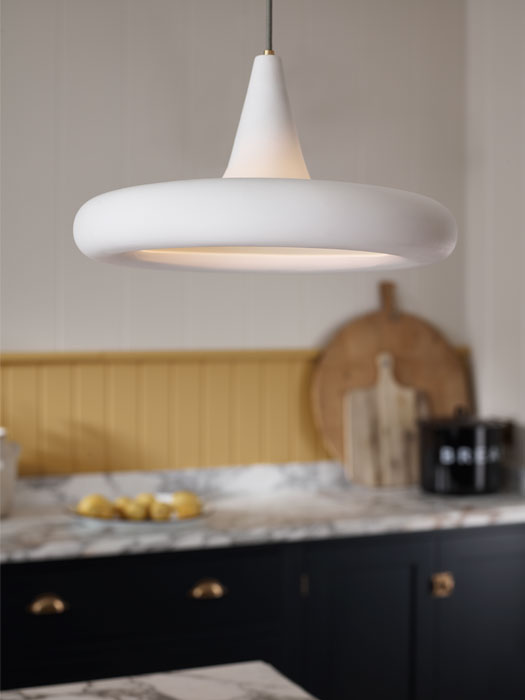
“We’re very particular about designing lights that are considered down to the finest detail. The ceiling rose, for example, also has the distinctive curved lip of the shade itself. We’ve done this with other lights in our collection – our ‘Fin’ has a ribbed shade that is echoed in its rose, as does the faceted Hatton collection. We’re able to design and trial as much as we want because of our production facilities – we’re not bound by someone else’s production schedule and can take our time to produce lights that are just as we want them, and that we are proud of.
“We’re so pleased with it, we’re considering if there could be a ‘next stage’!”
WAC Lighting acquires Schonbek
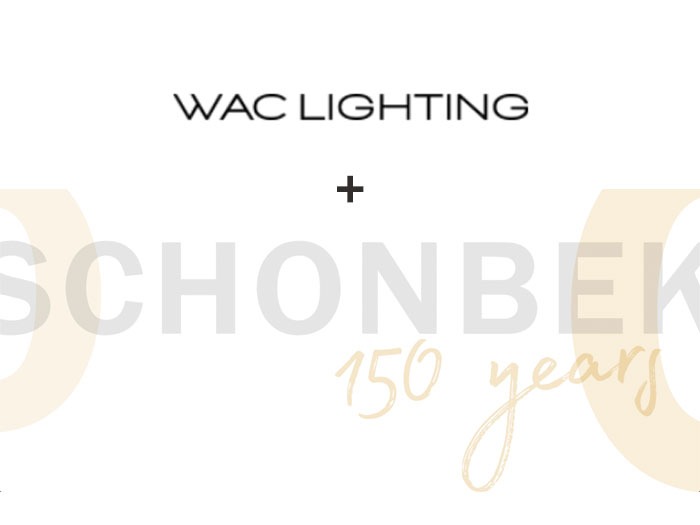
(USA) – WAC Lighting announces its acquisition of all operating assets related to the Schonbek brand from Swarovski Lighting, which includes the manufacturing plant that will remain in Plattsburgh, NY.
WAC is a leading manufacturer of LED architectural, task and decorative lighting. WAC will now own and operate a key US-based factory that will expand its domestic manufacturing capabilities to include fabrication, finishing, and assembly.
The Plattsburgh factory will focus on made-to-order and custom products for all of the brands in the portfolio, including Modern Forms, dweLED, WAC Lighting, LIMITED and AiSPiRE. It will also play a strategic role in designing new products and developing new luxury finishes for all brands. This synergy underscores WAC’s commitment to vertical-integration and market expansion. Schonbek is a global brand with established distribution in Europe, Australia and the Middle East where WAC does not yet have a presence. This strategic acquisition can be expected to be a precursor to an introduction of the W Group companies into those markets.
“If not for the time Dirk spent at Schonbek and then Swarovski, WAC would not have been approached to carry on the Schonbek tradition,” says Shelley Wald about her partner and Co-CEO of WAC, Dirk Wald. “But veterans of the lighting industry, will likely see the union of WAC and Schonbek as a natural progression,” continues Shelley Wald.
According to Dirk Wald, an industry visionary who co-founded Modern Forms, dweLED, WAC Landscape, LIMITED, and AiSPiRE brands, “We are excited to acquire the Schonbek brand of luxury crystal lighting and collaborate with the talented people in Plattsburgh to continue this proud tradition. After 1 July, there will be a period of investment in the operations necessary to secure the future in Plattsburgh, beginning with a KILLER new product launch that we have been planning for several months, in anticipation of this acquisition. Leveraging WAC’s strengths in nimble product development, the new Schonbek product launch, to be unveiled simultaneously in New York City and Montreal this coming Fall, will represent the largest product introduction in the history of Schonbek.”
“My family and I were thrilled to hear this news,” says Andrew Schonbek. "Working with Dirk was a joy, as I witnessed first-hand his creative energy, passion for the product, impeccable design sense and understanding and advocacy of customers. I predict that these unique talents will soon find expression in a creative renaissance at Schonbek that will once again position it as a leading, cutting edge brand. There’s nobody I know of who’s better positioned than Dirk and WAC to carry forward the legacy that four generations of Schonbeks laboured to build since 1870.”
Completion of the transaction is subject to various closing conditions. Subject to such conditions, the transaction is expected to close by June 30, 2021.
Chelsom - Looking Ahead
Although the world has suffered considerably over recent months, Chelsom's key strategic goal is to accelerate away from the Covid-19 pandemic so that it can fully return to servicing its global customer base with all of the enthusiasm and passion that has made it strong and successful over the years.
Will Chelsom, Managing Director, presents this short video of how Chelsom is "Looking Ahead" to a post-pandemic world.
HBA Announces New Management Appointments and Organisational Structure
(Singapore) - Hirsch Bedner Associates (HBA) announced today a new organisational structure with the appointment of four senior management positions as part of its growth strategy.
HBA’s organisational structure comprises four core business units, namely: HBA Americas, HBA Asia Pacific and EMEA, HBA China and HBA Brand Partners. In line with this, the following senior management appointments from within the Partnership will also take effect from the beginning of April 2021.




The Managing Partners will form a four-member Executive Committee overseeing groupwide strategy and decision-making, in addition to leading their individual business units.
Co-CEO, Ian Carr, said: “Today’s appointments recognise the remarkable talent among the leadership team of HBA, and will ensure our continued focus on delivering our commitments to clients, employees, business partners and shareholders. I’m confident that, together, Jacques, Andrew, Leo and Chris will lead their respective units and the group to greater success.”
Separately, the company announced today the retirement of René Kaerskov and Ian Carras Co-CEOs. They will both maintain their long associations with HBA as members of
the Board of Directors; from where they will continue to provide strategic consultation and advice.
Andrew Moore, HBA’s Global President, said: “Over the past decade, René and Ian, both influential figures in the global hospitality design industry, have overseen growth and led the transformation of HBA. Thanks to their leadership, the group is stronger today and is well placed to service our clients as the global hotel industry rebounds from the pandemic challenges. We look forward to their guidance as Board Directors.”
Incoming Head of HBA’s Brand Partners, Chris Godfrey, concludes: “HBA remains the dominant force in hospitality design and is committed to growing our design services that build on our beliefs and core competencies. The company has come a long way in the past 10 years. Today, we are excited to pivot on these successes as we navigate the current environment and push forward into the next decade and beyond.”
Against the backdrop of the COVID-19 pandemic, the HBA’s long-term management succession plan and timely organisational restructure will strongly position the group for growth and opportunities in the new normal.
Isrotel Kedma Hotel, Israel
Located in the Sde Boker region of Negev, Israel, the Isrotel Kedma Hotel has been designed by Interior Designer Ruth Arad to provide visitors with an exceptional hospitality experience, embedded into the breath-taking desert landscape. The lighting design scheme was completed by Rama Mendelsohn.
The hotel is comprised of seven Khan Nabati-style buildings, containing 163 guest rooms, shaded seating areas, a pool and a spa, accompanied by fruit trees and vegetation.
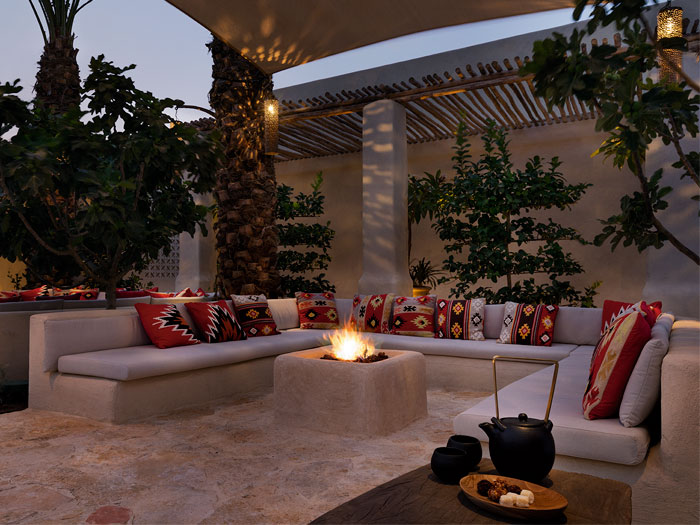
Lighting designer Rama Mendelsohn developed the lighting scheme for the hotel, getting involved after having a pre-existing relationship with the hotel’s project manager. “His vision was for a dimly lit hotel set in the desert,” Mendelsohn tells darc. “The environment would bring the visitor back to the days when people gathered around a campfire and roasted potatoes – back to nature, and to evoke the feeling of laying under the stars at night.”
The lighting scheme was therefore designed to mimic natural light; both the sunlight and moonlight hit the roof, creating varying textures and patterns, with the light and shadows dancing across the floor. On the main exterior axes, the lighting highlights the vegetation and sandals in the aisle ceiling.
Being located in the desert, there was an incredibly strong and bright natural light during the day. This therefore created some challenges for Mendelsohn in finding the right balance for the lighting to maintain the desired ambiance and ensure that the indoor spaces didn’t feel too dark in comparison to the bright outdoor areas during the day.
Mendelsohn continues: “We addressed this by illuminating the entrances of the hotel more than we normally would. Then, as guests move past the entrance, their eye is drawn to the decorative light fixtures, and the light they emit.
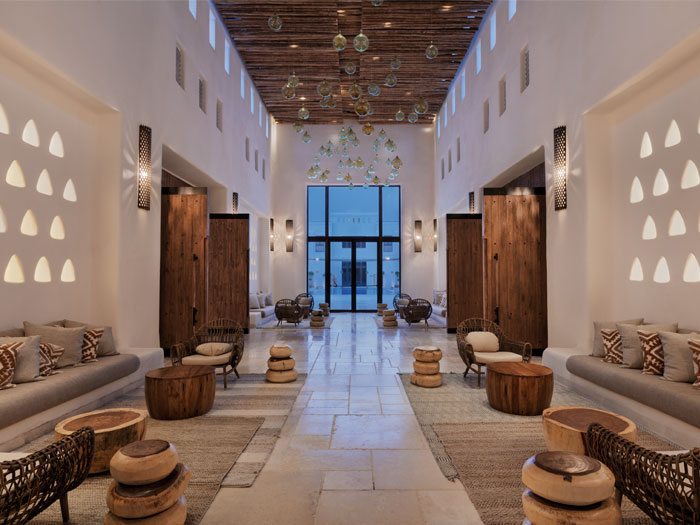
“The light dims a bit as one moves further into the hotel. This gives the eyes of the visitor a chance to adjust to the changes in lighting.”
After dark, the desert sky becomes blanketed with stars. Mendelsohn sought to brought this “wondrous view inside by lining the ceilings with wooden poles and adding small spots of light between the poles, making it seem as though you were looking up at the night sky through a thatched roof.”
To further complement and emphasise this desert backdrop, Mendelsohn utilised warm lighting, while decorative fixtures incorporate natural materials such as ropes and pottery. The colours used also serve to create a dominant contrast between the light and shadow.
“We sought to use as many raw and local materials as possible, such as straw, clay, glass made of sand, etc,” she explains. “Indoors, we pulled inspiration from candles, lanterns and torches – ancient lighting elements. These fixtures were specifically designed for this project; some of the materials we wanted to use were difficult to come by in Israel, therefore we used similar materials and used various techniques to create the look and feel we wanted to achieve.”
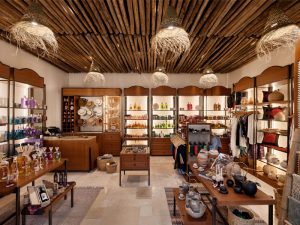
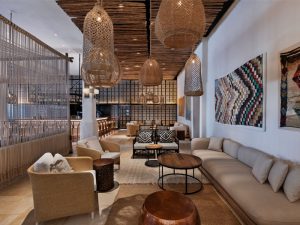
The use of raw materials extended to the exterior lighting scheme too, Mendelsohn continues: “Utilising various natural and raw materials, we were able to capture the movement of light and shadow. This evokes a sense of mystery as you turn the corners and walk down the alleyways located throughout the outdoor spaces.”
Inside, in the entryway, small nooks are illuminated by candlelight-like lighting and, when looking up, the star-like fixtures are affixed into the high ceilings to create the desired feeling of being under a starlit sky. The addition of illuminated mashrab elements continues the play of textures, creating visual interest within the space.
In the guest rooms, the hanging light fixtures are made of natural bamboo, while the clay fixtures on the walls soften the light in the space. A macrame element above the bed is also illuminated, creating an impressive texture on the ceiling.
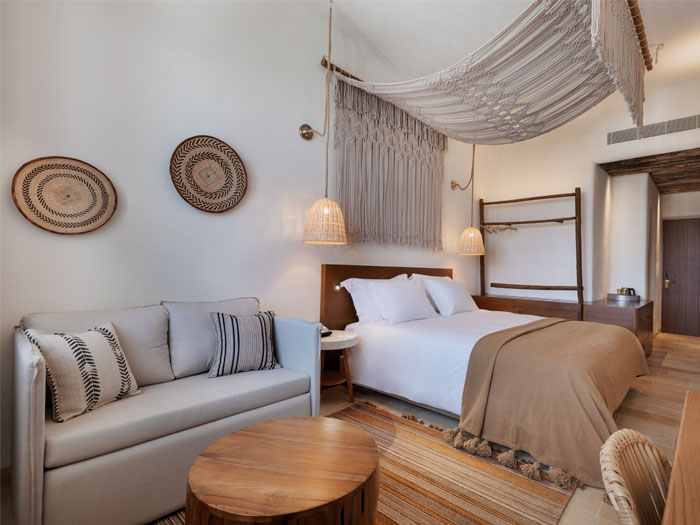
Complementing these rustic, raw materials, the architectural lighting has been designed to amplify the decorative lighting, ensuring that the interior spaces are lit appropriately, relative to the natural lighting in the environment.
Opened in August 2020, the Isrotel Kedma Hotel was completed in the middle of the global Covid-19 pandemic, and this naturally had some knock-on effects on the project itself, particularly when it came to sourcing products and materials. However, this led to an increased connection to the local area, as Mendelsohn explains: “Covid-19 created many challenges, especially with regards to importing lighting fixtures. While this was initially viewed as a difficulty, in the end it allowed us to create new connections with local suppliers and craftsmen.”
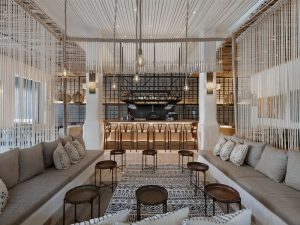
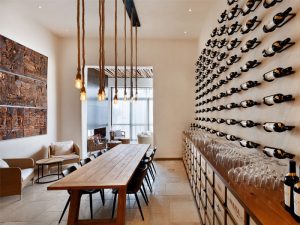
And Mendelsohn concluded that, despite the challenges that the global pandemic presented, this project provided a sense of escape for her, that she was very grateful for. “This was a very large project, both in size and scope, with fascinating spaces to illuminate, each with their own story. On a personal level, this project was a very healing experience for me, as it provided me with a unique, weekly opportunity to decompress out in the beautiful, blooming Israeli desert.
“I’m so grateful to have had the opportunity to work on this project, as I loved everything about it. I wouldn’t have changed a thing.”
Mayfair Townhouse, UK
The Mayfair Townhouse luxury hotel receives a design overhaul from Goddard Littlefair and Kate & Sam Lighting Designs, inspired by the flamboyant Oscar Wilde and his contemporaries.
Opening at the end of last year, the latest design instalment from Goddard Littlefair is The Mayfair Townhouse, the fifth luxury hotel from London and Regional’s collection of Iconic Luxury Hotels and is located in the heart of Mayfair on Half Moon Street, near London’s Green Park.
The boutique hotel comprises seven Georgian listed buildings within its structure of 15 townhouses, providing a unique hospitality experience for guests seeking a discreet London destination.
Notably, the townhouses lining Half Moon Street were once home to British historic figure Oscar Wilde and provided the setting of arguably his most famous play The Importance of Being Ernest. Known for his flamboyant influences, Wilde and his contemporaries spearheaded the Aesthetic Movement in England that celebrated beauty and design in reaction to the dominant, industrial revolution.
This rich history provided the foundations from which Goddard Littlefair drew direct inspiration from in order to create the indulgent design for The Townhouse. “They also led a rich and indulgent lifestyle, being provocative in order to court controversy. The design we pursued for the Townhouse marries Old and New Mayfair, with a layer of 1920s extravagance,” explains Jo Littlefair, Co-Founder and Director of Goddard Littlefair.
“There are almost no identical rooms in the entire building,” adds Martin Goddard, Co-Founder and Director of Goddard Littlefair. “Added to that, previous incarnations of hotels had wiped away period details leaving us with few historic references for the interiors. We had to set up a design language that could relate to the architecture and be interpreted into each room through panelling, colouration and distinctive detailing. The result is a unity through the bedrooms but guests who stay multiple times will have a different experience on each occasion.”
Capturing this playful spirit, Goddard Littlefair delved into the personalities of the original inhabitants of the area. The flamboyant dressing, pursuit of beauty and eccentric quality of the time is successfully interwoven in the design and has transpired through the fabrics, colours, intricate detailing and subtle layers throughout the hotel. Hints of extrovert personalities that lie beneath the building have been captured by Goddard Littlefair’s choice of colour palette and flashes of details, subtly capturing the adventurous mischief of the dandy.
“As the project evolved and understanding for the building and the aesthetic developed, the brief naturally shape-shifted to fit more uniquely with the bones of the buildings,” adds Littlefair.
“The main challenges of this project were working within the constraints of the existing building, which is made up of 15 Georgian Townhouses. There is no one space alike, and each with its own character. The public spaces are small and intimate, the ceilings are low, so we carefully designed the spaces creating a sense of space with the clever use of mirror and light. Although there were challenges with the spaces, they all add to the charm and character of the hotel, and these smaller spaces have helped us create a truly intimate and embracing experience.”
Upon entering the hotel, guests are greeted at the discreet reception desk, with warm glowing bespoke alabaster lamps and cut-crystal Contardi lanterns casting shadows on the ceiling, while a piece from Art et Floritude adorns the lift lobby.
“One of the challenges of the ground floor was the limited ceiling height not allowing for grand gestures overhead. Instead, we aspired to create a layered approach that would draw your eye down and into the space,” describes Littlefair.
Adjacent to the reception area is the aptly named Dandy Bar. Located in the heart of the hotel on the ground floor, Goddard Littlefair’s design lures you in with a twinkling, dimly lit atmosphere pulling you away from the busy streets of Mayfair.
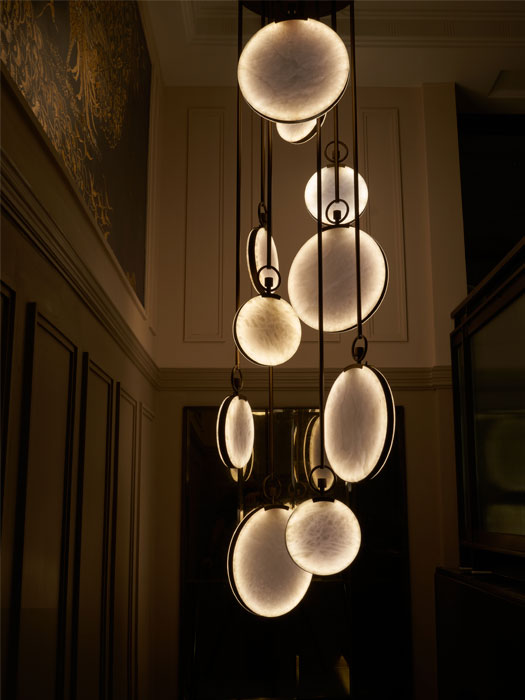
“Cantilevered shades spread their arms over the central seating area of the bar, while raffia wall lights [from Colonel Shop] mounted on lacquered wall panels hint at travels further afield and the glamour of a trip to far-flung places. The showcase in this area is the feature gantry [bespoke from Northern Lights] above the bar made from hand-cut feathers and the feature alabaster disc chandelier [from Contardi], which cascades over the staircase. Both of these provide drama and intrigue and draw you into the space to explore further,” details Littlefair.
“We looked at the flamboyance of feathers in flapper outfits and the traditional gentleman’s pocket watch to inspire the design of both of these pieces,” adds senior designer Gemma Prentice.
Moving below to the lower ground floor, guests will find the Club Room, which acts as a library space, a snug room nicknamed The Den and the restaurant.
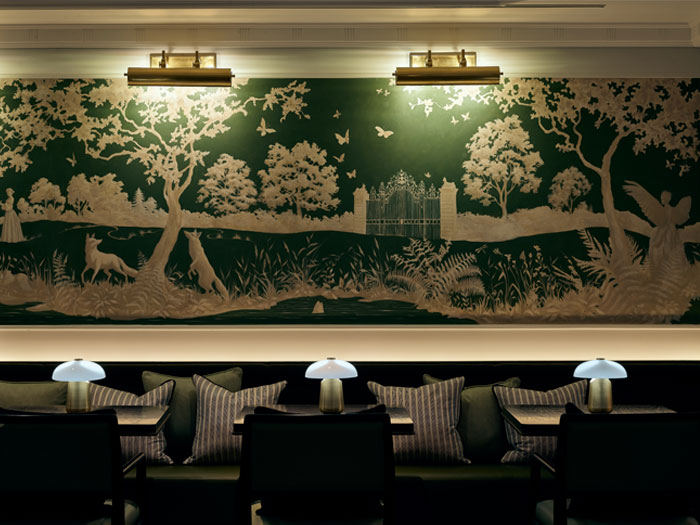
“Having no natural daylight in the lower ground floor, we strove to ensure that light levels were good without being overbearing or obvious,” elaborates Littlefair. “A series of panels on the back wall mimic windows to give the illusion of daylight, these all provide a glow of light to the back wall. A set of six built in shelving units on the other two walls, which are used to display objet d’art but which also form a part of the lighting scheme, highlighting a bashful raspberry colour in the recess that provides a highlight to the overall scheme. Again, challenges to ceiling heights entailed clever design of decorative lighting, notably cantilevered wall lights that project out into the space providing a general glow while directing light onto tables.
“The same wall light was used within the small private snug area of the restaurant placed into the four corners of the room, helping create a cosy, intimate space. Flush alabaster ceiling lights were used here to allow for flexibility in seating arrangements and bespoke alabaster ceiling lights were used down the corridor, which leads you down towards the function room, WCs and gym,” she adds.
“Picture lights are used to highlight all the artwork, which is more sympathetic to the original Georgian Townhouse spirit.”
The lighting pieces referenced by Littlefair in this area of the hotel include bespoke cantilevered wall lights and corridor lights from Contardi, ceiling lights and picture lights from Visual Comfort and the private dining pendant from Moooi.
In addition to these spaces, also occupying the lower ground level is a multi-use function room. “As a multifunctional space, lower ground area, we wanted to ensure that there was still an emphasis on the decorative lighting but that it would also not overpower the space. A series of wall lights [with bespoke adaptations of standard fabric shades from Servomuto] run around the perimeter on panels, which mimic windows, while a feature circular pendant [bespoke from Contardi] with tiered fringe panels in an ombre effect provides a dramatic centre piece,” continues Littlefair. “Artwork throughout the hotel has been carefully curated and here [Visual Comfort] picture lights highlight the hand-painted mural depicting scenes of Green Park, which is within striking distance of the hotel.”
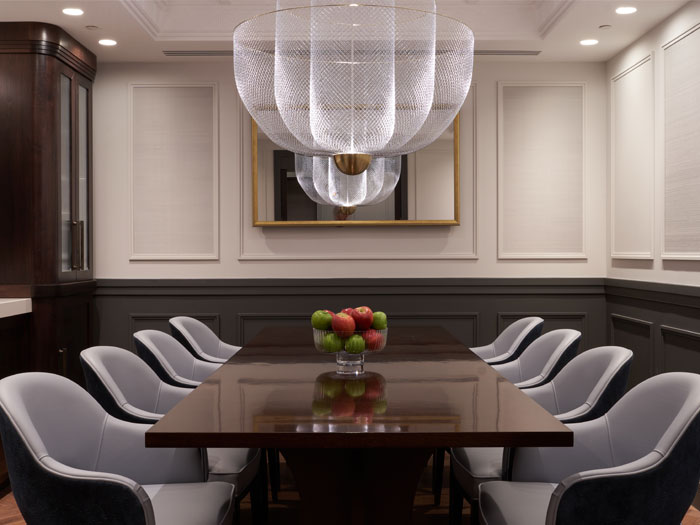
Moving to the guest rooms above, nearly each room is unique from the other. The Garden suites gave Goddard Littlefair the opportunity to work with an indoor/outdoor scheme that took inspiration from British Fashion Photographer Cecil Beaton and his love of gardens. "The position of these suites on the ground floor of the property meant we could incorporate some of the exterior of the building into the rooms. Inspired by Cecil Beaton’s love of gardens, we created a crittal framed conservatory with doors opening to a small, walled courtyard allowing the guest their own English garden in the heart of London,” says Littlefair.
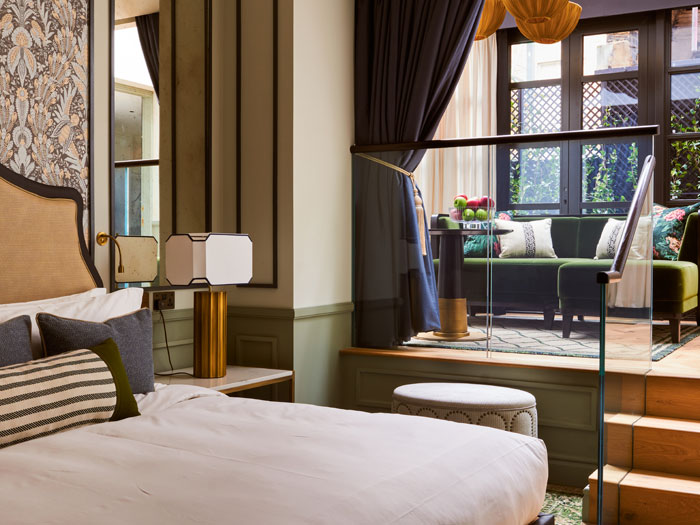
Two additional suites on the fifth floor of the hotel had working titles of the Penthouse Suites during the design process. The design intent for these two spaces drew inspiration from the fictitious but contemporary Dandy muse. “What decadence would this person embrace and how would they wish to live in the 21st century Mayfair, were questions we posed to ourselves during the evolution of these designs,” says Goddard.
Littlefair adds: “We used a subtle yet rich colour scheme and wanted the lighting to bring another layer of materiality. Faux alabaster and antique brass fashioned in contemporary shapes that nodded to the past bring warmth to the rooms.” Northern Lights provided bespoke bedside lights in the Executive suites and bespoke fixtures from Contardi in the Deluxe Rooms included bedside lights, flood lamps and picture lights, and pendants from A Shade Above were featured in the garden rooms.
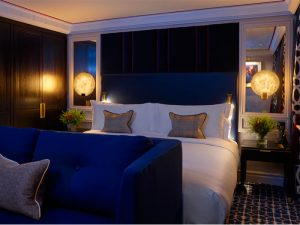
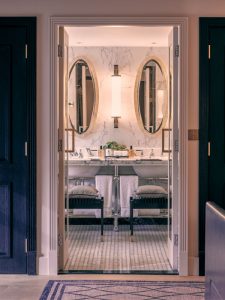
When working and designing this quirky space, it was important for the team to ensure an aesthetically pleasing balance of light throughout. Littlefair continues: “We wanted the architectural lighting to be minimal and for the decorative lighting to be the focus in this project. The architectural lights are well concealed and all integrated into the design elements so that they don’t create a focus but work together with the decorative lighting to create intimate spaces.” This led the team to work with Kate & Sam Lighting Designs to approach the architectural lighting design. “We feel having a lighting designer on a project is key,” explains Littlefair. “Lighting plays such an important role within interior design, and if the lighting output isn’t right then it can make or break a project. Kate & Sam helped to establish the architectural lighting design while being sympathetic to our decorative lighting. They ensured that we used fittings that would not dominate our design but sit discreetly within. All of the fittings were set onto dimming systems and scene settings were programmed to ensure that the lighting levels were optimised throughout the day. This is all crucial for creating the right environment and intimate feel for the hotel. We normally work with a lighting designer on all of our hospitality projects.”
Kate Wilkins, of Kate and Sam Lighting Designs, adds: “Decorative lighting is always crucial for the aesthetic, the placement essential for the layering, and the lamps for dimming complementing and setting the moods”.
Working with the light settings and programmes, the duo ensured the lighting scenarios guaranteed a welcoming atmosphere for guests on arrival, focusing the eye where needed, and complementing the times of day and task lighting to flatter and provide an all-round feel-good energy for guests. “The basement was the trickiest area, as there is no natural light and needs to provide breakfast with a townhouse club feel,” explains Wilkins. “So, we introduced some different colour temperatures suggesting daylight in wall details. And, in the evenings, complementing the exclusive club mood. Scene setting was crucial to the spaces.”
Reflecting on the project after completion, both Goddard Littlefair and Kate & Sam were very pleased with the outcome.
“The lighting truly helps to create and emphasise that residential and intimate feel that we wanted. It creates a sense of warmth and invites you into the space. Standing on the street at the entrance of the hotel, it’s the lighting that catches your eye and draws you in, especially the feature lit gantry above the bar. The lighting works seamlessly with the design as a whole, it’s delicate balance of traditional and contemporary.
“We wanted each space to have its own design language and therefore each space has its own decorative lighting design. To emphasise the residential feel, there are multiple designs of lighting that also create a lovely, layered feel. It was about a richness of material to convey luxury and indulgence, using brass, alabaster, pleated silk and hand-crafted glass,” she adds.
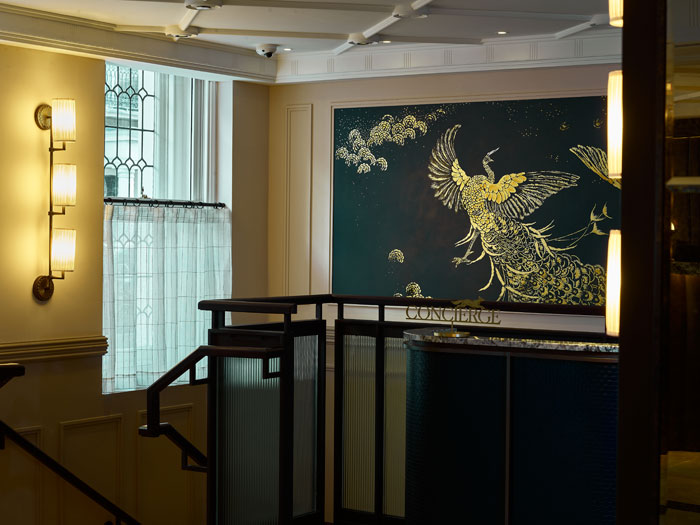
“Almost all the lighting was bespoke, and we particularly enjoyed the process of creating the gantry bar light, which utilised a bespoke mould to create each glass element that were then finished by hand with an antique gold paint finish. Reaching the final finish and quality of the glass required really utilised all the knowledge and skills of the artisans involved.
“We were very pleased with how the design turned out. We were able to realise the majority of all of our initial plans and ideas.” concludes Littlefair.
Wilkins adds: “This was the first time [working with Goddard Littlefair], and we really enjoyed it. They were open to ideas, suggestions and comments. Hope they feel the same way! When things open up, we can’t wait to sit in front of the glowing bar and enjoy some cocktails.”
Churchill Tree Restaurant, UK
Artin Light and Bridge Architects' designs for the Churchill Tree restaurant used bespoke lighting pieces from Northern Lights , creating an atmospheric destination for diners to sink in to.
The Churchill Tree restaurant, located on the grounds of Alderley Park in Macclesfield in the north of the UK, is the end product of the refurbished grade II listed Tenants Hall, which was completed at the end of last year.
Artin Light was appointed as the creative lighting design consultants, in collaboration with Bridge Architects, to develop the lighting scheme for both the internal and external aspects of the restaurant.
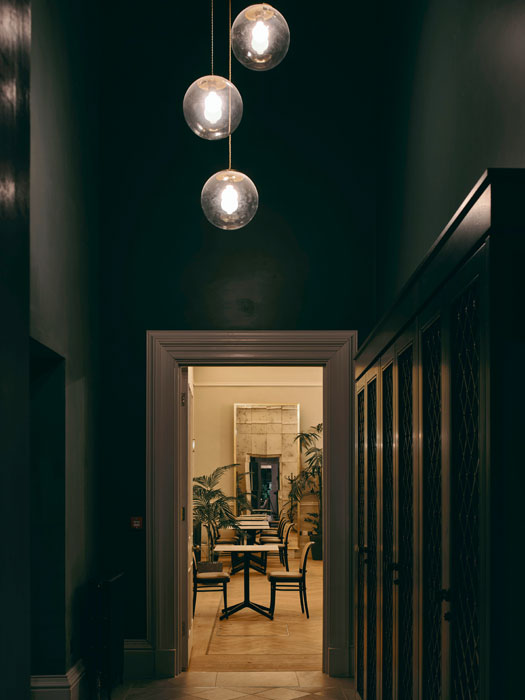
As lead designer, Bridge Architects undertook the architectural and interior design throughout, and also the new architectural intervention that included a contemporary restaurant, which sat in contrast to the existing Tenants Hall section of the property.
Together, the design teams worked on the lighting design, specifying both the decorative and architectural lighting, as well as the lighting control system.
darc sat down with Luke Artingstall of Artin Light to discuss the lighting in more detail. “Given the beautiful and historic nature of the existing architecture, and also the new contemporary elements of the scheme, the importance of lighting design was highlighted from the offset, ensuring the spaces were appropriately lit to complement the interior design throughout,” he explains.
“The Tenants Hall was an extremely tricky space to illuminate, given the architectural restrictions, so the design needed to be carefully considered, aiming to enhance the original architectural features, but not detract from their natural qualities. The lighting control system design was also fundamental to the success of the design, ensuring both functional and dramatic light was applied to the different operating scenarios throughout.”
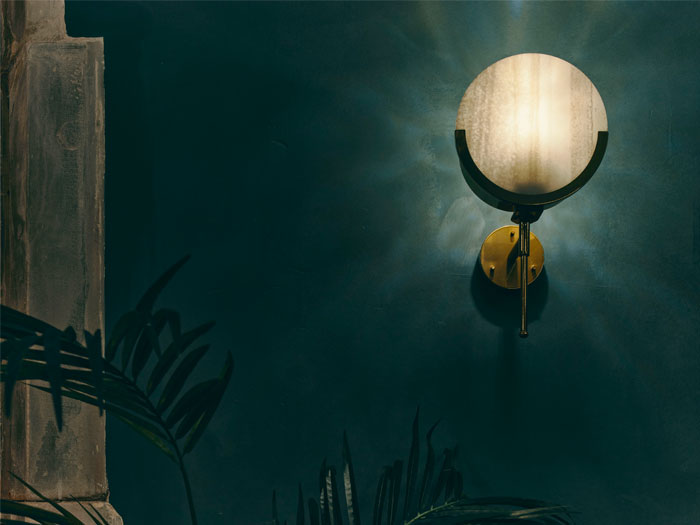
It was important for the team to blend the old and new together yet highlight the contrasting architecture through the use of lighting, but it was also essential to ensure consistency across the scheme.
“Our initial brief was to bring drama into the historical interior of the building through the use of light,” explains Artingstall. “Our final impression of this was very close to the original concept and brief, and the dramatic lighting really helps to amplify the user experience within the historic interior. The selection of decorative luminaires created a balance between the historic elements and the new architectural interventions that were brought into the scheme.
“Architectural lighting was used across the scheme, providing both functional and accent lighting throughout the interior. The integration of architectural lighting was minimal, as the main source of lighting throughout was delivered by the decorative lighting,” he adds.
“Within the Tenants Hall, architectural spotlighting was used to highlight the existing roof beams. Each beam was illuminated by two 10-degree beam spotlights, aimed to focus the light in a controlled manner onto the woodwork itself, whilst minimising the spill light onto the soffit. Soraa Brilliant lamps were selected for the architectural spotlighting due to their optical performance and quality of light.”
To accomplish the desired light programming, the team opted to use Mode Lighting controls in combination with architectural lighting from the aforementioned Soraa lamps, as well as SLV Lighting spotlights and downlights, and lamps from iGuzzini, alongside bespoke decorative lighting, which was provided by Northern Lights throughout.
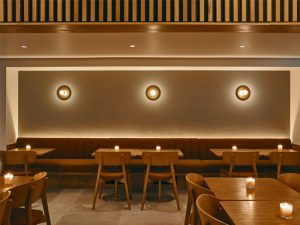
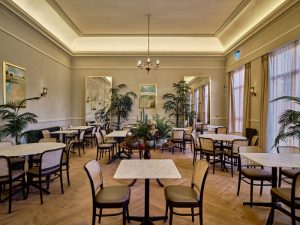
Victoria Hilton, Director at Bridge Architects, explains the importance of decorative lighting and the part it played in the overall interior design of the building: “As the existing parts of the building were listed, this meant we were limited in terms of physical architectural interventions. With this in mind, the lighting design became critical to developing the drama and atmosphere we sought to bring to the various spaces.”
Artingstall continues: “As with any decorative lighting scheme, the selection of luminaires was driven by the aesthetic qualities as well as the way they delivered both functional and textured light into the scheme. The decorative lighting across the full scheme was the main source of functional lighting, so we needed to ensure they provided a level of performance and function as well as delivering their aesthetic and ambient qualities to the space.
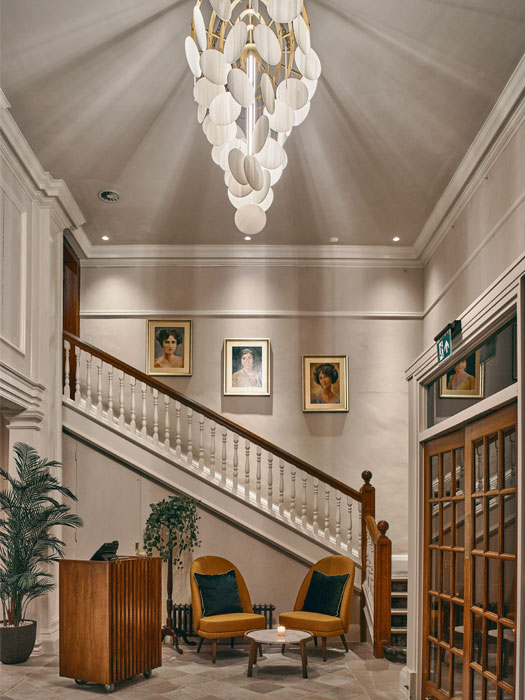
“Material selections for the decorative luminaires were considered in coordination with the interior designers and the overall material palette. The interior had a number of brass features within the scheme, so the selection of decorative lighting was very much focussed on brass-based materials.
“A combination of satin brushed brass and polished brass was used with the decorative lighting. The selection of decorative diffusers for each of the luminaires ranged from antique hand-blown glass spheres to alabaster sheet diffusers, which extenuated the warmth of the lamps and provided light texture on the adjacent architectural surfaces.
“All of the decorative lighting across the scheme was integrated into the lighting control system, so in the evening scene set ups, the luminaires were dimmed to extremely low levels, thus creating the drama and highlight within.”
Hilton and her team worked closely with Northern Lights to create the bespoke light fittings that were used throughout. She says: “We worked closely with Northern Lights in the design of all the bespoke light fittings to ensure that scale and material choices were complementary to the spaces and other internal finishes.”
Working with the structural constraints of the listed building, the team had to work with a number of prefixed positions for the main sources of lighting in the Tenants Hall. The large chandeliers were installed in these existing positions that were defined by the pre-existing lighting fixtures and power supplies.
In addition to this challenge, the team were faced with a number of design obstacles throughout the design process. However, Artingstall reflects that “fundamentally, it was important the spaces were not over lit, but also provided the operator the control and flexibility they need when transitioning from day to night, and into the late evening”.
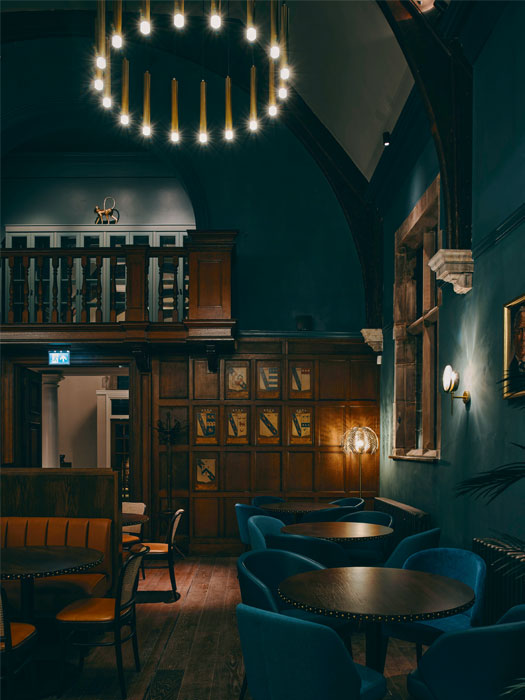
“The control and zoning of the lighting installation gave us the opportunity to really refine the ambience in the space and create different scenes dependent on the time of day and functionality required.
“I believe it’s inevitable that on reflection of a complete project, you always have elements that you would like to change or amend in certain ways. On the Churchill Tree, I believe as a collaborative design with the interior designers, we managed to get the best out of the scheme given the brief and also the commercial factors associated with that. I don’t feel we need to draw attention to anything that we would do differently, as I believe the overall scheme was a huge success,” he concluded.
Hilton adds: “Working with Luke was fantastic, and he was quick to understand our design concept for creating a different ambience to each of the primary spaces. Developing the lighting design in parallel with the interior design proposals was beneficial, and Luke's attention to detail (whilst being mindful of budget constraints) was critical to the success of the final scheme.
“We are delighted with the end result, and the project has been extremely well received by our client and the operator.”
Samuel Wilkinson
Beem's Curli and Smile flexible filament LEDs are unique responses to the typical light sources available. Sarah Cullen sits down with designer Samuel Wilkinson to find out more about their creation.
Beem established itself in 2016 with the idea of bringing new LED technology to the decorative lighting world, with a playful brand name that relates to both a beam of light, and the word beaming used to describe a wide, happy smile.
Samuel Wilkinson met with Chris Stimson and Bujar Shkodra (Founders of Well-Lit) in a Shoreditch-based coffee shop to discover the new LED technology they were producing and quickly found common ground over the exciting possibilities that followed, creating something unique.
“Originally our initial discussions were centred around designing a new bulb for their existing brand but after the first presentation, we realised there were five to six strong ideas that each could easily be launched straight away,” says Wilkinson. “It made sense to create a standalone brand as clearly there was huge potential for an ongoing partnership. So, that was the start of Beem.
“The partnership was very natural. I had been thinking about new ideas for light sources since working with Plumen and Chris/Bujar were running the successful lighting company Well-lit; we complemented each other very well.”
The main drive behind creating Beem was to “provide an alternative to a saturated market of retro industrial styled bulbs, to offer a paired back design aesthetic that looks towards the future rather than the past,” he adds.
“Essentially, we want to create a positive contemporary lighting brand that centres around making innovative light sources with an accompanying ecosystem of complimentary fixtures that can work in a lot of different environments.”
The first port of call for the designers was to create a product that challenged the current conventions of E27 sources, while retaining an attractive and sustainable fixture.
“We realised that nearly all bulbs went downwards and appeared to flow out from the from the bulb holder. Our reaction was to then do the opposite, make forms that go upward and that visually separate rather than flow from the holder. A light becomes a sculpture in the air, so by designing the bulb holder to complement the light rather than become an ugly extension was important. The idea was to either hide it with the bulb, as with Curli, or make it a key part of the designs visual balance, as with Smile,” explains Wilkinson.
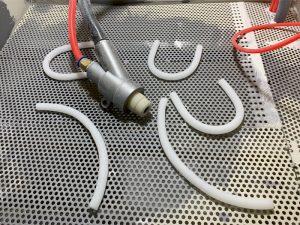
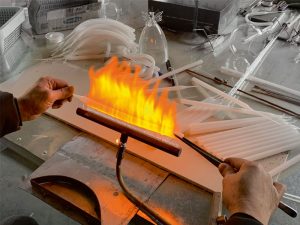
All the light sources at Beem are handmade, and the team work hard to ensure as little plastic is used as possible. The Smile range comprises entirely handmade glass and industrial ceramic, and the Curli collection is a combination of ceramic and polycarbonate as the form is too complex to simply consist of glass.
“For all our bulbs we use flexible filament LED. Lightbulbs have always been controlled by technology and with the development of the flexible filament it makes it easier to move away from a centred source of illumination. Without this technology, we would not have been able to achieve the right quality of global illumination from such a small form.
“Chris and Bujar had already established a good relationship with the best manufacturer of flexible filament in the world, so when I got involved it was easier to challenge the norm and try to innovate. Having a willing supplier is half the battle to make challenging ideas become reality.
“At first, we were constantly in hacking mode, smashing and deconstructing light bulbs and then mocking up new ones with the aid of a 3D printer and soldering iron. The hardest part of all was getting the products up to the right quality for production. For example, getting the handmade glass bars for Smile was incredibly challenging. These bars appear simple but getting the right combination of form, construction and price was not very easy.
“There are moments when you are pushed to compromise on a design, but I always find if you can stay true to the original design the product generally turns out to be much better.”
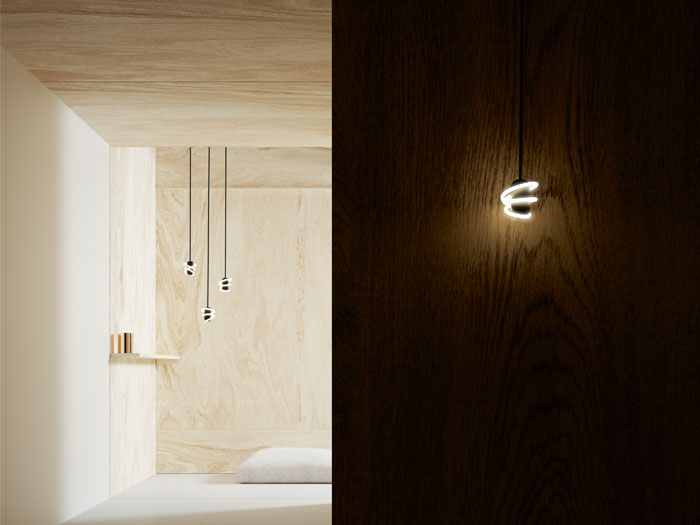
According to Wilkinson, the biggest challenge that the trio faced when designing their fixtures was working with the E27 socket. They worked on trying to make products that refine the standard tolerances between the components, light source and fixture. “This has been a constant challenge, as it needs to work with our holder and many different others. “Understanding the limits of the E27 actually led to the input of our rotating mechanism hidden inside the ballast,” he explains.
“As the bulbs are directional, we wanted to have a system that made it easy for the designer/specifier/installer to have greater control to how they are presented. Without the mechanism, the only way to organise or line up this kind bulb was to try to reposition the fitting or cable after initial install. Now it can be placed without thought, screwed in and then repositioned to suit with backward turn of up to 100-degrees. This hopefully is a game changer.”
Each of their “unique, efficient and optimistic” products, as described by Wilkinson, are designed with different characters so they have the flexibility to suit multiple applications and environments. The Curli is well-suited as a retro fit inside other shades or as a collection on its own. The Smile range is a great choice on its own or is very effective when clustered together to produce a graphic language. “Smile 03 in particular is hopefully perfect for architects/interior designers to use in different ways to embellish their projects,” adds Wilkinson.
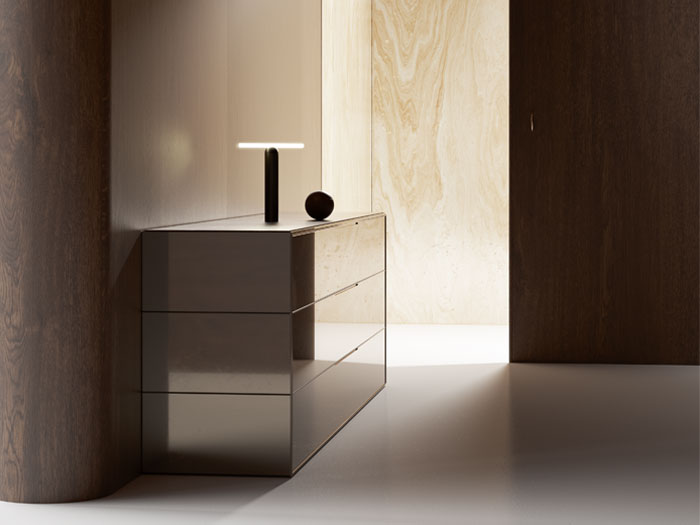
“Design with light is like ergonomics for the eyes, a great lamp is as satisfying as relaxing on a comfortable sofa.”
Looking to the future, this young brand is working steadily, making sure they don’t “run before walking”.
Last year, they launched a number of chandelier fixtures that complement their existing collections. In addition, they also introduced brass variants of their fixtures and extra accessories like a hood for the table lamp, for example.
“The aim is to build up the accessories and options alongside the bulbs to have a ubiquitous offer.
“On top of this we have a few new bulb designs in the pipeline as well as a rechargeable product, which is exciting,” concludes Wilkinson.
Ed Carpenter

What is the concept behind the Pigeon Light?
The Pigeon Light was intended as an alternative souvenir for London; a reaction to the poor-quality products on offer in most tourist shops and also a celebration of the wildlife of London.
How long have you been working on the product for?
We’ve been working on the reissue on and off for about a year.
What was the most challenging aspect?
The most challenging aspect of this product was deciding how far to stray from the original. In the end we decided everything except the shape of the shell was up for grabs.
Can you describe the design process?
The original Pigeon Light mould was sculpted and shaped in clay and the whole making process after that was very hands-on. The original shells were made from acrylic (which I initially vacuum-formed myself), and an off the shelf clothes peg - it was great fun, but these materials and processes had obvious limitations in terms of strength and scalability.
When the time came to look at this again after 20 years, the industrial designer in me wanted to improve things – so we now mould the shell from a high-quality polycarbonate, which enables us to clip and snap things together without the material sheering. I also decided to drop the original clothes peg (which was somewhat controversial in the design studio) as I felt it could be improved as part of the new production process. The final thing we did was introduce a turned beech wood base, which means the light can sit on a table more easily than before.
What technologies does the product use?
We digitally scanned the original shell to insure 100% accuracy – it’s still an unashamedly analogue product in spirit.
What makes this light different to other lighting products available?
It’s a bit of fun executed in a paired down, simple way that we hope still appeals to a wide audience.
What kind of environments / clients is the Pigeon suitable for?
The Pigeon Light has consistently had a very wide appeal, which I’ve always enjoyed. A bit like a real pigeon, it feels at home in most places!
Describe the Pigeon Light in three words?
Original, Urban, Souvenir.
Kaori Hiroki
Based in Tokyo, Kaori Hiroki is a Japanese lighting designer and Women in Lighting Ambassador for Japan. Currently working under the name Lyshus, Hiroki began her lighting career after discovering the wonders of light at university and then pursuing her first job at Uchihara Creative Lighting Design, an award-winning practice.
“While in the company, I got involved in more than 100 different projects, a wide range from large-scale to small, such as international airports, redevelopment projects, residential buildings, illumination events, etc. After 10 years of working, I left the company for my next step. I studied in Denmark, then started to work independently back in Tokyo in 2018. I have been working as a lighting designer for 14 years in total,” she tells darc.
Starting her career in 2007, Hiroki, much like many in the lighting industry, notes the most significant evolution in lighting in Japan was the introduction of LED.
“Before, it was important to combine various light sources such as metal halide, fluorescent, and halogen in a well-balanced way,” she explains. “However, after the Great East Japan Earthquake in 2011, energy-saving got more attention than before in the country. Around the same time, the performance of LED light sources had evolved dramatically. Those two factors accelerated the shift to LED light sources. At first, designers, manufacturers, and users were confused by the emergence of the new light sources, but they gradually accepted it. I believe that the change to LED as the main light source greatly impacted lighting design. It enabled the downsizing of fixtures and also widened the design style for many designers.”
When asked about the Japanese lighting market and what makes it stand out internationally, Hiroki refers to “Shadow” as one of the Japanese design themes. “I think many lighting designers are sharply conscious of it. With Japanese traditional architectural styles, people in the past had developed a sensitivity to finding beauty in the shadows in our daily lives,” she says.
“However, we began to lose such shadows due to the change of lifestyle. Today, Japanese people seem to be a little insensitive to brightness tones in general, and many of us spend our nights with very bright lighting. I think lighting designers are trying to bring back the delicate senses for shadows that lie dormant in people by presenting various forms of night.”
She also highlights that there are a number of lighting design practices in Japan that are leaders in the market. “The quality of their design is high, and many of them have won prestigious international lighting design awards. Although, it's not easy to get into such renowned lighting design companies, I guess this ensures their quality because, once designers get in, they can gain quality experience in the field and learn a lot from various specialists directly. The market in Japan still has a lot of room to grow. Many experienced young designers, including myself, are trying to become independent and create new approaches.”
In reference to lighting design in interior spaces, we asked whether there were any particular interior design trends emerging in Japan at the moment and what impact this has on lighting. She observes: “People seem to prefer a minimal and simple interior design with authentic materials. Regardless of the size or function of the space, natural materials such as wood are actively preferred. I feel that decorative designs tend to be perceived as a bit deliberate.”
In terms of decorative lighting, Hiroki’s background is more linked with architectural lighting design. However, she has worked on designing bespoke lighting for various projects. “I have designed custom-made fixtures such as lantern lamps, bracket lamps, and streetlamps for several projects. By adopting the lighting design styles and materials that match the theme of interior and architecture, I can create a sense of unity and originality for the entire facility, including the lighting fixtures. This kind of custom production is relatively common.
“Speaking of decorations, illumination events are popular in winter, and lighting designers often get involved in them. I myself have experience working on Illuminations. I designed not only the installation of illuminations but also original objects. I could see the visitors' positive reactions firsthand, and that's one of the best parts of the job.”
Hiroki’s involvement in Women in Lighting began in 2019. She first met WiL’s Co-Founders Sharon Stammers and Martin Lupton of Light Collective when she was in Denmark attending a seminar. Upon returning to Japan, she continued contact with the pair, and when the time came, she put herself forward to be the ambassador for Japan.
“What I first did as an ambassador was to collect stories of women in Japan's lighting industry for the feature article "Your Interview" on [WiL’s] website. I'd known there were many females involved in lighting design in the country. I invited those who wanted to be on the page and conducted interviews in Japanese,” she explains. “Then I posted the English version of them on it. The English translation was mainly done by my sister, Akane, who volunteered her time and effort. I gathered voices from diverse backgrounds, including lighting designers, engineers, and electricians. Currently, 11 interviews have been posted, and several more are in progress. I will keep empowering women in the lighting industry step by step.”
As is the case with so many internationally, Japan too was greatly affected by the global pandemic of Covid-19 and the construction industry in particular took a big hit.
“It has been an uncertain situation for a long time due to the Covid-19 pandemic, and the entire construction industry has been greatly affected. For example, many construction projects have been cancelled or postponed, and material deliveries have been delayed. “Accordingly, the lighting market has also been greatly affected. I experienced the cancellation and postponement of several projects too. We are still struggling with various restrictions like refraining from going out, but I believe there are things we can see only in this situation. All of us are trying to find what we can and do the best in this difficult time,” she reflects.
Looking to the future and what developments she is witnessing in lighting in Japan, Hiroki observes the recent trend for lighting manufacturers and developers in Japan is the development of their “unique services that combine LED and IoT for control, such as wireless dimming systems and complex colour control systems”.
“I see this trend continuing, and the research on how to combine technology with lighting will develop more.
“At the same time, it seems that users' awareness has not yet caught up with the technology or mastered it, so I think it will be a challenge for lighting manufacturers and designers to bridge this gap.”
Eastern Europe Design Report
Eastern Europe’s lighting industry is vast and varied, with differing levels of expertise and influence, darc sits down with a handful of designers from across the geographic region to catch a glimpse into their local lighting communities.
Russia
Dima Loginoff is an award-winning Russian product designer with experience in designing for world famous lighting brands such as Cartier, Vitra, Lodes, Axo Light and Preciosa. His work has been featured in international brands as Starbucks, Porsche and Hilton.

Loginoff sat down with darc to describe the lighting market in Russia, how it differs to the rest of the world and how it is in a period of infancy transitioning into a strong contender for international recognition.
“The lighting industry is just starting to develop in Russia with the local brands. There are just a few successful companies at the moment. What you need to know about the Russian market is it was always about how to sell European or American products, not about local production. Now we are in the beginning of something new – the production of the Russian companies.
“It’s very new with all the typical problems that occur at the very beginning of change. For example, not every local company is ready to work with designers, especially famous designers. And even if they are ready, the major problem is trusting the designer. It’s all classic young naivety for the new industry that they should learn to overcome.
“[Furthermore], the design market in Russia has a very big problem – it’s full of fakes. The reason why? It’s because of the weak Ruble. So, the only way for now, and in the near future, for Russian design players is to create unique, good and inexpensive products to lure clients over to their side.
In response to the global Covid-19 pandemic, Russia experienced an unexpected influx of spending as people became anxious of maintaining production relationships and finishing ongoing projects.
“People spent money at the beginning of the epidemic because they were afraid of stopping European and Russian production, and interior projects had to be completed with interior furnishings and lighting. And it was really supported for the retail and local productions. But of course, when production stopped for months it caused many problems. I can’t currently understand how deep those problems are, but it seems to not as deep as I was expected in the beginning.”
Czech Republic
Lucie Koldova is an internationally respected product designer based in Prague. After a couple of years gaining experience in the French design scene in Paris, she returned to her home country to establish her own studio.
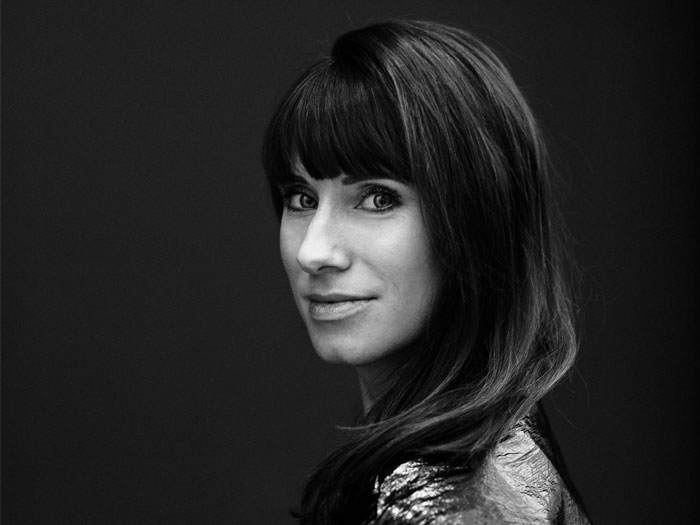
For several years, Lucie Koldova has held the post of art director with Czech glass manufacturer Brokis. “I like working with traditional materials with advanced technologies and seeing the exciting tensions that arise when unconventional proportions are combined with elaborate details,” she says. “I create timeless objects, not trendy ones. I draw inspiration from many different spheres and am fortunate to be able to work not only with glass in the creation of lighting. I also design furniture, interiors, and fashion accessories for European manufacturers.”
Reflecting on the Czech lighting market, Koldova explains its unique relationship between technology and traditional craftsmanship. “Czech lighting is unique because the technologies that go into producing it are firmly rooted in centuries of regional glassmaking tradition. Not only are contemporary Czech manufacturers continuing a historical tradition, keeping it alive, they’re also driving it forward. And there are new glassmaking companies appearing as well,” she says.
“The country’s most important glassmakers today include Moser, Rückl, Preciosa, Brokis, Lasvit, Bomma, and Verreum. These companies focus a lot of resources on the remarkable quality and extraordinariness of their brands, and they collaborate with recognised designers, combining tradition with modern technology and an archetypal aesthetic with contemporary trends.
“In the Czech milieu, there’s an ever-increasing number of specialised glass design firms and independent artists of European and world renown, and despite their diverse artistic opinions and approaches, they all share an interest in interdisciplinary collaboration.
“Another distinguishing characteristic of the Czech lighting design scene is its multiformity and the emphasis placed on the narrative value of the designs. I see that Czech glass design, and therefore also lighting design, is no longer only the realm of the glassmaking community but has expanded to encompass independent designers for whom glass is a medium through which they can execute their visions.”
When looking closer at Czech’s design styles, Koldova observes there is not a particular trait or theme to come out of the country. However, instead there is a “certain conceptual multiformity, a play on meanings, shapes and materials”.
“Czech design doesn’t shy away from exaggeration. In that regard, we might be somewhat aligned with the conceptual designs of Droog Design, Hella Jongerius… The domain of Czech design is glass as a medium, ceramics, and porcelain. We also see a big comeback taking place in textiles, an industry in which the country was once a global leader.
“What I see is craftsmanship leading us through the good times and the bad. We cherish all types of artisanry and it’s something the whole world can appreciate. When Brokis introduced the Muffins collection, there were many who said the style and success of the large volumes of handblown glass were going to have a significant impact on a wide range of companies and editors too. Nonetheless, I don’t consider glass trendy; I like to think of it as timeless and fascinating.”
And much like the rest of the globe, Czech Republic too has felt the harsh impacts of the Covid-19 pandemic across its design sector. Koldova comments: “The situation is difficult in more ways than one, in all the affected countries. That much is clear. At this point, it’s still too soon to know exactly how the lighting market is changing. The important thing is to continue to maintain the world-class quality of the artform. The situation now has shown the lasting value and longevity of the quality hidden within this type of work the authentic products that come of it. And that’s also how I see sustainability. I think we’ve already begun to and will continue to shift our focus towards the process of creating objects, whereas until recently it was only the object itself that was important.”
Looking to the future of the lighting industry, Koldova notes that the recurring theme of sustainability is key for larger companies. “I work closely with Brokis, a company where sustainability and circular economy are ongoing topics. Environmental topics take on an entirely new importance once a company reaches a certain level. It’s a must. We need to be conscientious in our thinking, and the topic of waste is a big one just about everywhere you look.”
Croatia
Skira is an architectural lighting design practice based in Pula, Croatia. Founded by Dean Skira, an internationally respected lighting designer, lighting enthusiast and creator, the practice is located on the Adriatic Sea where four seasons change the daily perception of light, shadow and colour, which significantly influences their understanding of light.
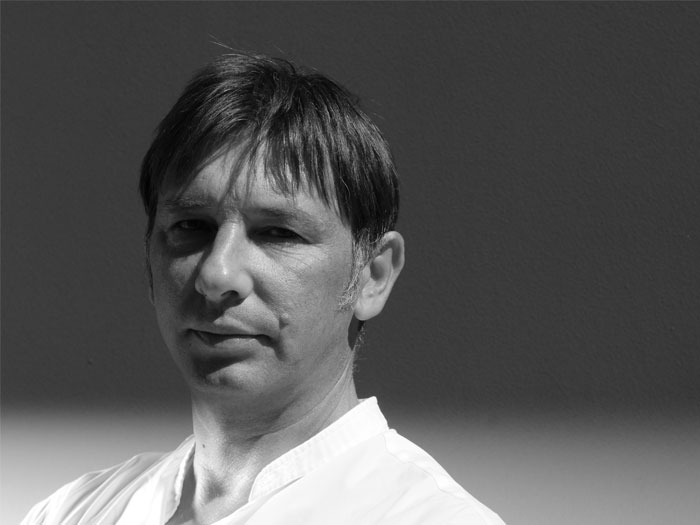
When speaking with darc about how the lighting community in Croatia has evolved during his career, Dean Skira, founder of Skira, said: “As far as I know, we are still the only professional lighting design company that has been promoting hard work and lighting design in Croatia and internationally for over 20 years. Many privately held companies emerged in our lighting industry but I believe that just recently, people recognised the difference that true lighting design makes.
“We’ve overcome most of the issues by proving that good lighting pays off. This is especially important in extensive public work. Providing the utilitarian quantity of light is a process that doesn’t really depend upon creativity today, it doesn’t require an artistic or philosophical approach if we just want to illuminate space for the basic necessity to see at night. Light is of course much more than that and we are finally seeing that this awareness has grown, and we expect more Croatian lighting designers who will be internationally active in the near future. We have manufacturers like Filix who invested in quality of products and placed themselves on the international market.
“There is still a lot of promotion and education necessary for lighting design to become a regular part of every architectural project. Overall, there is also much hesitation among investors to invest in high-quality lighting. The market is relatively young, so there were many speculative attempts, but it seems that the market is on its way to recognise design and quality and stop focusing on low price solutions and thus neglecting the quality of light. Light should always be designed beyond utilitarian, otherwise it is not designed, and people deserve to live in a well-designed world.
When asked about whether there are any current interior design trends that have an impact on lighting design in Croatia, Skira says: “Interior design is quite eclectic and diverse. There is no single line that most designers follow. We have many talented and creative professionals in that particular area. In the residential market, investors often play a crucial role in decisions that resemble their personality and culture. On the other hand, regardless of styles or trends, every human being has similar needs for light. Regardless of whether the architectural and decorative space is traditional, minimalist, or eclectic, good lighting must meet all the needs of end users. That means that the deep thought of light is without boundaries.”
Without much experience in working with decorative lighting, Skira highlights that despite focusing his work solely on architectural design, the overall umbrella aim for lighting is to create a comfortable atmosphere for people.
“I primarily try to achieve an atmosphere that makes people feel pleasant in a space during night. Each space is different with its own peculiarities and people who live in these spaces are repeatedly different. That’s why I prefer that clients, architects, and interior designers participate in choosing decorative lighting since that is part of personal or professional taste.”
Looking to the future of the lighting industry, Skira comments on the lack of “innovation” and that many are still on “copy-paste principles”.
“Most manufactures are in survival mode for too long, and very few are willing to invest in profound breakthrough innovations. That is mainly present in public lighting, which mostly affects the environment and energy consumption. There is a large room for improvements.
“In 30 years of practising, almost every aspect of this industry, I have seen many changes and met many people in the global lighting environment. The lighting industry needs a serious update of design thinking, production and catching up with all other technologies present in some other industries. We also need to find a way to gain more authority in architectural field because lighting is much more than the source, and too many people still don’t acknowledge that fact.”
And like many of us internationally, the impacts of Covid-19 have not been kind to the Croatian community with natural disaster causing more issues for the country.
“We are struggling as much as everyone else. Amid the pandemic, we were hit by severe earthquakes in our capital city and nearby during the year, which was a big shock for the whole country, but we are fighters and a very united nation in times of crisis. We are moving forward, renovating, reconstructing and handling the pandemic. Being an agile company, we accommodated and adjusted faster, and we are trying to anticipate the problems, so we had a relatively good year, and for now, 2021 seems promising.”
Slovakia
Haz Lighting is an architectural lighting design firm based in East Slovakia. The small team makes a big impact in its region, fighting for the credibility of lighting design as a practice in Slovakia through education and professional practice.

Haz Lighting was first established by architects Laura Murguía Sánchez and Pavel Sabol in Slovakia in 2010. After moving from Barcelona where they had spent 15 years practicing, the duo established Haz Lighting with a focus on light-art and light installations. “Somehow it was the way to spread the word about lighting design, a profession that was not yet well known in the country,” explains Sánchez.
In 2011, Sánchez established the subjects Lighting Design and Lighting Basics at the Faculty of Arts at the Technical University of Košice, where she continues to work as a researcher and lecturer. “In these subjects, student participation is actively promoted. It is important to mention that this faculty is quite particular, since it brings together four departments: Architecture, Design, Fine Arts and Intermedia, and History of Arts, giving a very rich mix of ideas year by year,” explains Sánchez.
Later in 2013, Lenka Balážová joined the team with multitudes of electrical and lighting experience. The team then created the platform Light Lab, working and living in Prešov, Eastern Slovakia.
“Under this platform we continue cooperating with institutions, non-governmental organisations or entities that need support in the field of lighting design, in the form of workshops and lectures, etc. But our main work focuses on architecture and landscape lighting, participating in the design process appointed by architects,” continues Sánchez.
“When we moved to Slovakia we have found a different situation to Barcelona. There was no independent lighting studios or lighting designers that took a holistic approach to their projects. The term ‘lighting design industry’ has been an unknown notion in the country; it has been developing mainly as a part of electrical planning and focusing on functional and economical strategies rather than complex lighting design projects,” she adds.
“Even the role of an architect in the planning process has often been underrated in the past, but there has been a major improvement thanks to the extensive activism of younger architects promoting reflection about urban environment and new customer needs.
“Nowadays, the role of lighting design is still just complementing the overall architectural idea, often times introduced late in the process of the planning and, moreover, we see that lighting planning is being executed by manufacturers or their commercial representatives as a part of business strategies, usually for free. This makes it very attractive for investors, but they do not realise that they are missing other very essential assets, which integral lighting design would introduce.
“Our vision was to put our energy and gained experience to promote the profession in this environment. It has not been easy, but after 10 years we can evaluate it as a very positive evolution. More and more, the projects we are involved in become complex.
“New interior design programmes have been recently implemented in the architecture and design faculties in Slovakia which shows the growing interest in the topic. Also, there are architectural studios dedicating their practice to exploitation of the scope, but their methods have diverse inspiration and so the lighting design depends on the character and outcomes of the whole. Generally, there resonates return to craftmanship and strong inspiration by nature, by its fragmental reinterpretation or mimicking inside our environments.”
Sánchez notes in Slovak interiors, lighting is typically used as part of functional objects that establish composition and order and a “visual experience in the space”.
“A different path took the application of lighting into wider public architectural works, where it became an integral part of the overall architectural compositions, yet for the most part in the sense of general lighting.
“Slovak lighting design as a profession is developing slowly since the quest for energy efficiency and technology innovations has unequally overshadowed all other important challenges for lighting justification in wider contexts, such as biological and environmental improvements. Yet, also thanks to wide activities, its importance is being reminded not only in the artistic and architectural circles, but also in the technical and public circles.
“Lighting touches so many fields, so there are so many diverse collaborative assignments we get involved in, where we always learn something completely new with excitement, and so we like to stress importance of the coordination with all the professions and people working on the task. Cooperation and collaboration are vital for any development.
Australasia design report
Acting Editor Sarah Cullen sits down with product designer Edward Linacre of Copper to find out more about his lighting practice, the design market in Australia and the current challenges it faces.
Edward Linacre is the Co-Founder of Melbourne-based Copper, a product design studio that specialises in illuminated artworks, contemporary luminaires, limited edition lighting fixtures and installations, both large and small-scale.
“I am an Industrial Designer and Artist who trained and worked in Australia and Germany before starting my own studio, Copper, in 2013, with Industrial Designer Viktor Legin,” he tells darc. “Initially we were operating as a product design consultancy across various industries, including Medical Device design where we authored international patents. However, our focus was drawn to our artform-based side project, creating sculptural lighting. The art of illumination to me was the amalgamation of technical lighting engineering and my passion for sculpture. My works were born through no commercial aspiration, but for visual and emotional pleasure.”
Since working within lighting, Linacre has observed some changes within Australia’s lighting industry, noting in particular the move “towards site-specific lighting solutions, in harmony with their environments, and a movement away from the traditional approach of specifying stock lighting products for interiors”. As a result of this, at Copper they have since designed their ranges based on their ability to be customised and personalised to the requirements of the client and the space.
When asked about what makes Australia’s market stand out from the rest, Linacre highlights the geographical impacts that being an isolated continent can have. “We are isolated from the global design community, so we are not as influenced by global trends. As we have far fewer industry lighting and furniture manufacturers than Europe or the US, a boom of small-scale designer maker studios has been underway for the past 10 years,” he says. “We all strive to have our own identity and aim to be distinctive, but overall, we are environmentally sensitive due to our Australian environmental conditions. The design and architecture community in Australia is leading the charge in environmentally focused initiatives, like zero carbon operations, and re-use/recycling of waste product. As the design community is small in the scope of Australia, we are very supportive of each other, and regularly exhibit without peers and competitors. I believe we feel together we are stronger.”
As we will see in the following case studies from Australasia-based designers and manufacturers, the use of natural materials in lighting products is a driving focus in this region. “Natural materials are a strong theme across my industry. Metals, timbers, stones; exploring the beauty of organic materials is a fascination of many. “We also experiment and explore through design and there are some very influential young designers working to encourage research-based outcomes, innovation, and exploration of social, cultural and environmental factors of their work. Through our design education, we are taught to understand the obligations of a product designer to consider all implications of the product we are bringing into the world.”
Aside from this materials-based commonality within the region, Linacre doesn’t believe there are any specific trends occurring within both the product and interior design industry. However, he notes that the lighting designer/maker scene, more specifically in Melbourne, is booming these days. “We are the new New York. We keep each other striving for individualism and experimentation, and support and encourage each other to succeed and push the limits of our artform,” he explains. “We help each other with parts, with providing advice to the younger studios - it is really a beautiful community.
“We don’t focus on trends, but I can tell you our glass work (the Flask System) is doing very well, primarily I believe due to its ability to be personalised and customised to suit the requirements of the client or space.”
Some of the most note-worthy designers in Australia at the moment, according to Linacre, include Christopher Boots, Coco Flip, Volker Haug, Ross Gardam, Articolo, Nightworks, Adesignstudio, BTD, and Porcelain Bear, all because “they are bloody brilliant”.
One of the biggest problems the Australian design market is facing currently is one many will find relatable – counterfeit products. Linacre adds further: “As with any market, we face the imports of cheap replicas, counterfeit products and rip-offs, even of our own Australian products. But the public is learning the faults of fast furniture and lighting, and we see a resurgence of local manufacturing in Australia, and a growth of my industry in the past 10 years.”
Looking ahead, Linacre believes Australia will continue driving forward the site-specific lighting outcomes and encouraging less mass production of single items that may not have the effect required by the environment. “We also are involved in a biodegradable material revolution of sorts in Australia. Our contribution is Mycelium, [a multidisciplinary creative studio and co-working hub that seeks to develop community and improve our environment through design thinking and the creative process]. We have created seating, lighting shades, and various other 100% biodegradable products, and it’s only the beginning.”


